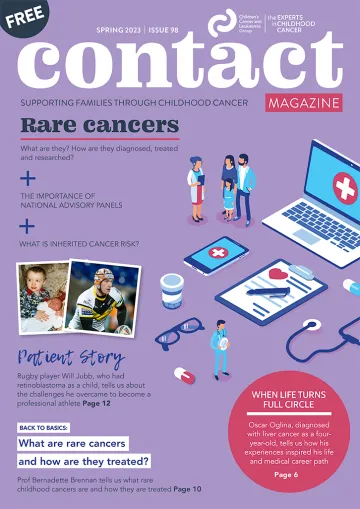- PROJECT TITLE: Delivering γδ T cells (gamma delta T cells) for osteosarcoma immunotherapy
- LEAD INVESTIGATOR: Dr Jonathan Fisher
- PROJECT TEAM MEMBER: Alba Southern, PhD student
- INSTITUTION: University College London (UCL)
- AMOUNT AWARDED: Approx. £245,000 (funded by The Little Princess Trust in partnership with CCLG)
Osteosarcoma is an aggressive cancer that usually affects bones in teenagers and young adults. Patients need gruelling chemotherapy, radiotherapy and surgery that can drastically affect quality of life, both during and after treatment. Current therapies don’t only attack the osteosarcoma cells and so there are a lot of side effects which often require time out of school and studies, making a big impact to patients' lives. Sadly, even with current treatments, osteosarcoma often spreads to the lungs and comes back after treatment has finished.
Here at the Fisher Lab at UCL, we are trying to find a better treatment that specifically attacks osteosarcoma cells, to better fight the cancer and reduce the burden of side effects. We think that immunotherapy could be the right treatment because it trains cells from the immune system, called T cells, to fight cancer and has been very successful in other cancers.
However, immunotherapy doesn’t currently work for osteosarcoma - we think this is because the immune cells can’t find the tumour or are too worn out when they get to it. We want to make a new type of T cells that will seek out osteosarcoma and remain strong enough to fight it. My lab is focusing on immune cells called gamma delta T cells, which we’re using to create a new type of immunotherapy.
Testing the treatment
It’s important to test the new immunotherapy in a realistic setup. Researchers have found that 3D models of cancer show how the disease may behave much better than 2D layers of cells grown on plastic. Therefore, we needed to develop a 3D model of osteosarcoma that mimicked the cancer’s normal environment inside bones.
In collaboration with researchers from UCL and the Italian Istituto Ortopedico Rizzoli, we created a 3D model similar to bone tissue, using osteosarcoma cells embedded in high-density collagen. This is more realistic and makes it much harder for immune cells to get to the cancer cells.
To see whether our T cells worked, we labelled the cancer cells and T cells with different colours that glow under fluorescent lights. Through the microscope, this showed that our T cells can not only penetrate the dense collagen surrounding osteosarcoma, but also can find and kill the cancer cells in the 3D models.
Presently, this ‘seek and destroy’ process requires extra medicines, but we want to enhance the T-cells so that they can work without additional drugs.
What’s the impact?
This project also gives us a fantastic opportunity to share our knowledge, raise awareness of osteosarcoma and talk to young people about their research priorities. Through our Patient/Public Engagement group we have shared our results with osteosarcoma survivors.
Patient representative Melissa said: “Osteosarcoma patients have had the same treatments and the same survival statistics for decades. As patients, we want more tools in the fight against this disease, and this new treatment option could offer a better chance at long-term survival for those of us living with osteosarcoma.”
We hope that, by continuing to improve the T cells’ fitness and their ability to find cancer, they will be better at seeking out, and fighting, osteosarcoma.
The lessons learned from this project are not limited to osteosarcoma - we hope to apply them to other cancer types in the future.
More about our research projects
From Contact magazine issue 98 - Spring 2023


